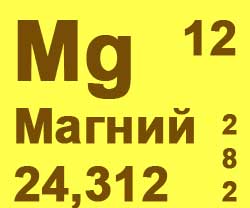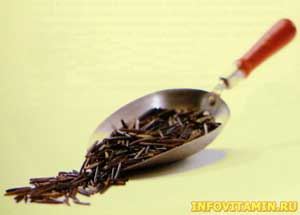Magnesium — description, useful properties, methods of application, daily norm of magnesium
Magnesium is certainly one of the most essential elements for health. According to recent data, it is part of more than 300 enzyme systems and contributes to the prevention and treatment of many chronic disorders.
Magnesium — what is it?
 Magnesium. |
On average, the human body contains about 25 g of magnesium mainly in bones and skeletal muscles. The excretion of magnesium from the body increases with stress, certain health disorders and types of medical treatment, as well as with high physical exertion. A menu rich in refined foods does not always give a person the right amount of magnesium. It is not difficult to compensate for the deficit with dietary supplements. Magnesium is available in the form of compounds — oxide, sulfate, aspartate, carbonate, citrate, gluconate.
Beneficial properties of magnesium for the body
Magnesium is necessary for the burning of organic substances in cells with the release of energy, for nerve conduction, muscle relaxation, bone formation and teeth. In combination with calcium and potassium, it controls the heart rate and participates in the formation of insulin.
| Do you know? |
| The so-called hard water is healthier than soft or «softened» water, because it contains a lot of calcium, magnesium and other useful minerals. |
Prevention
Recent studies suggest the hypotensive (lowering blood pressure) and anticoagulant (from thrombosis) action of magnesium, which, combined with the ability of this element to prevent arterial spasms and dangerous cardiac arrhythmias, is especially useful for recovering from myocardial infarction.
Its adequate intake into the body is important for the prevention of insulin-independent diabetes. American researchers have been monitoring magnesium levels in more than 12 thousand people predisposed to diabetes for 6 years. As it turned out, when they don't have enough of this element, the disease actually develops 94% more often than when there is a lot of it.
The main use of magnesium
Relaxing the muscles, magnesium helps with sports injuries, chronic fatigue syndrome and fibromyalgia. It relieves premenstrual syndrome and strengthens bones after menopause, i. e. reduces the risk of osteoporosis. The antispasmodic properties of magnesium are important for asthma and bronchitis. Its role in the prevention and treatment of allergies and migraines has not been studied, but, according to some data, it enhances the effect of sumatriptan, a migraine remedy.
| Latest news |
| Magnesium lowers blood pressure: this is evidenced by a study of 60 hypertensive patients of different sexes. On average, their systolic (upper) pressure dropped by 2.7 mmHg, and their diastolic (lower) pressure dropped by 1.5. Even such a seemingly insignificant decrease reduces the risk of myocardial infarction and stroke. |
Our needs: recommended daily allowance
For men, the recommended daily allowance of magnesium is 420 mg, and for women — 360 mg. For medicinal purposes, these amounts can be increased.
Lack of magnesium. Even a small deficiency increases the risk of cardiovascular diseases and diabetes. Possible symptoms of spasmophilia (predisposing to spasms of increased excitability of motor nerves) and allergies, as well as reduced resistance to infections. If magnesium is very lacking, you are threatened with cardiac arrhythmia, loss of strength, depression, spasms up to convulsions. Plus irritability, nervousness, confusion.
Excess magnesium. The main problems are diarrhea and nausea. People with kidney diseases who are unable to remove excess magnesium in the urine have muscle weakness, drowsiness, confusion, difficulty breathing. However, such an overdose occurs only when the intake of various substances into the body is very poorly controlled.
| For your information |
| Take magnesium supplements at the same time as calcium supplements. Their imbalance in the body can reduce the effectiveness Best of all, our intestines absorb magnesium citrate (its citric acid salt). Magnesium oxide is cheaper than other magnesium supplements, but it is also absorbed worse than other forms. |
Indications for the use of magnesium preparations
• Spasmophilia and depression.
• Prevention of cardiovascular diseases, primarily arrhythmias.
• Symptoms of chronic muscle fatigue.
• Arterial hypertension.
• Maybe an allergy.
• Premenstrual syndrome.
Methods of application of magnesium
• Doses
For the prevention of cardiovascular diseases: 40 mg per day. From cardiac arrhythmias and insufficiency, asthma or chronic fatigue syndrome: 200 mg, preferably in the form of magnesium citrate 2-3 times a day. From diabetes and arterial hypertension: 500-600 mg/day. In total, per day (with food and dietary supplements) is not recommended (unless the doctor advises otherwise) for men more than 770 mg of magnesium, and for women — more than 710 mg.
• Reception scheme
This element is best absorbed during meals. If diarrhea appears, reduce the dose or try replacing magnesium citrate with its gluconate.
| Caution! |
| In case of kidney disease, take magnesium only after consulting with your doctor. Magnesium reduces the effectiveness of tetracyclines, an important family of antibiotics. |
• If you are being treated with medications, take any vitamins and supplements only with the permission of a doctor. |
Release form
 A good portion of wild rice (or, more precisely, another grain — water cicania) gives an adult a quarter of the daily norm of magnesium. |
• Ampoules
• Tablets
• Capsules
• Granules
Food sources of magnesium
The best food sources of magnesium are whole grains, dried fruits, legumes, leafy greens, shellfish, dark chocolate and some mineral waters (check what is written on the bottle).
To the section «Mineral substances — descriptions, properties and applications»
•••••••••
